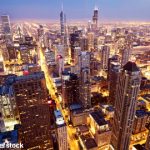Biology is complicated, however, and not every protein, RNA, or metabolite that shows up as a blip in an “omics” profile will make a good biomarker or target of therapy. There is much randomness, serendipity, and luck in the journey from bench to bedside. Please remember that anti–tumor necrosis factor started out as a drug for sepsis and that allopurinol was invented as a way to increase blood levels of 6-mercaptopurine to treat malignancy. Furthermore, some of the key insights into gout—a common disease of older people—came from the investigations of rare genetic diseases of children. The study of Lesch-Nyhan syndrome helped elucidate purine metabolism while the study of conditions like Muckle-Wells syndrome demonstrated how inflammasome triggering can lead to interleukin (IL)-1 production. Fortunately, for children with autoinflammatory diseases, anikinra (IL-Ra) is available as a treatment; although IL1-Ra was conceived initially as a sepsis drug, it got its first approval for rheumatoid arthritis.
My pizza finally arrived, and this bubbling cauldron of molten mozzarella and tomato embedded with chunks of peppery meat was a culinary hit. Whatever it lacked in finesse, it made up in flavor, and the tiramisu for dessert was quite creditable. After my dinner, I walked back to my hotel. The wind had picked up and the air pulsed with the stroboscope lights of evening traffic and the whoosh and whine of speeding cars. Every so often, in the distance, I could hear a Bears’ fan bellowing still another exultant whoop over the victory on the gridiron. The mood of the city seemed upbeat.
A Somber Note on the Magnificent Mile
On New York’s Fifth Avenue, St. Patrick’s Cathedral stands as a majestic Gothic monument that looks as if it were plucked from Chartres or Beauvais and resettled in Gotham. The Magnificent Mile has no such formidable edifice, but there is jewel of a church—a miniature Gothic—called the Fourth Presbyterian Church right across from the John Hancock Center. I never knew that Presbyterian churches were called something other than the first. Here in Chicago was the fourth. Where are the second and third?
In front of the church there was a small grassy area enclosed by a black wrought-iron fence and shaded by a gracious oak tree, leaves still in place despite swirling winds of autumn. My eyes were immediately drawn to a display in this area. Suspended on grooved and rusted iron rods six or seven feet high, the kind used in construction to reinforce concrete, were tens of tee shirts—pink, grey, red, some striped, many with lettering or logos. At first I thought the tee shirts looked like flags or flowers in bloom, a celebration of some kind, but my impression changed quickly when I read the sign that accompanied the exhibit.
